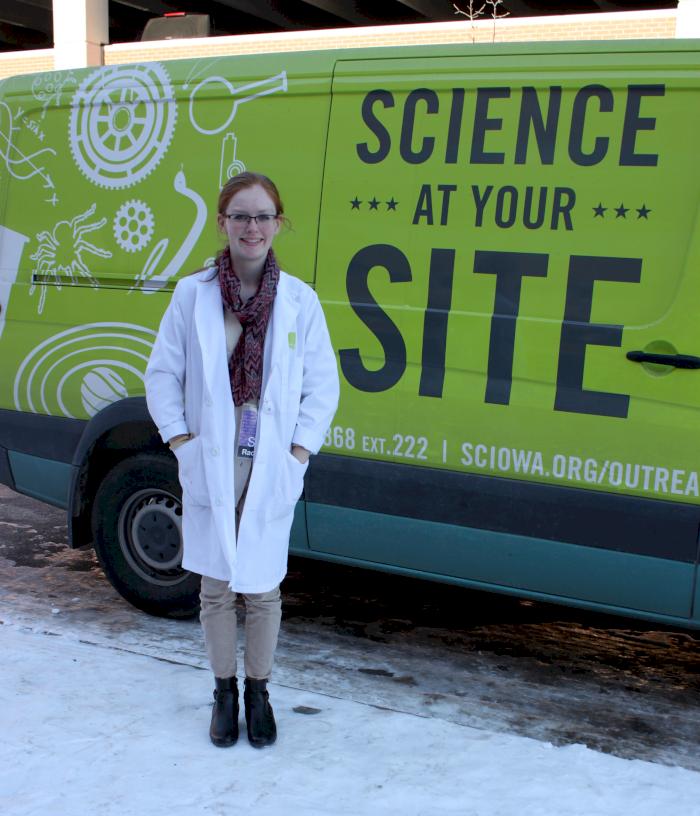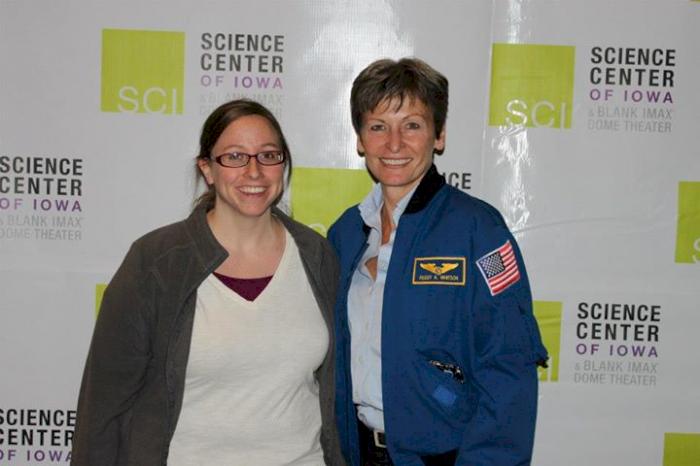STEM Across the State: An SCI Outreach Road Trip
- Tuesday January 5 2016
- General SCI
By Rachel Braak, SCI Outreach Presenter
I like to call myself a morning person because compared to some people, I am. But 3:30 am is a little early, even for me. Luckily, I went to bed early, prepared everything the night before and hit the road right away with a fresh cup of hot chocolate in my hand. Time for a day of Outreach for the Science Center of Iowa!
I arrive at SCI early in the morning, and all I hear is the quiet hum of the building at work. As I load the van with liquid nitrogen, a tank of hydrogen and a whole box of matches, among other experiment components, I know I’m in for an exciting day. I get in the car and settle in for the three-hour drive to North Fayette Valley Community Schools.
When I arrive at the school I am greeted with smiling faces and eager questions from students in Pre-K all the way through 8th grade. “What are those balloons for?” “Are you a scientist?” My favorite question is, “Are you going to blow things up?” If I am doing our popular “Boom!” program, I happily reply, “Yes, I will be setting things on fire and there will be explosions.” Most of the time students think I am kidding. I mean, 99 percent of the time they ask that question the answer will be “no.” I love getting to tell them “yes”—their eyes light up!
I set up and am all ready for the students when they start to come in. They stare at me in my goggles and lab coat in awe. No matter their grade level, they all start guessing what I’m going to do. Throughout the show, the look of excitement in their eyes makes the early morning and long drive well worth it. From our “whoosh” bottle experiment to the fiery hydrogen balloon explosion at the end of the program, students are on the edge of their seats, answering and asking questions, learning and having fun.
Even after five shows in a row, the students’ energy is contagious. I always find myself in awe of science just as they are. I can’t wait for each experiment, even though I have done them many, many times.
As I pack up the van and prepare for another three-hour drive back, I look across the parking lot and see busloads of kids waving at me. I wave back, get in the big, green SCI van and head on my way. I’m still smiling because I know my day was well spent inspiring kids to explore the world of science.


